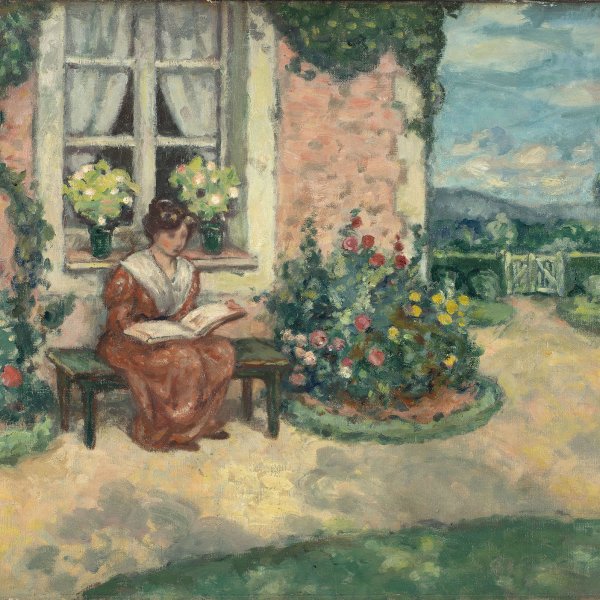Georges D'Espagnat
Painter, illustrator and scenographer, Georges d’Espagnat moved to Paris in 1888 soon after finishing his secondary studies. The artist briefly attended both the Académie des Beaux Arts and the Académie Colarossi but his impatient character led him to complete his training autonomously although occasionally encouraged by the painters Gustave-Claude-Etienne Courtois and Jean-André Rixens. In 1891, d’Espagnat first exhibited at the Salon des Refusés (Palais des Arts Décoratifs) and from 1892 his works participated on a regular base in the Salon des Indépendants. In 1905 the painter also contributed to the foundation of the Salon d’Automne for which he later served as the vice-president (1935). Stylistically d’Espagnat was greatly indebted to Sisley and Renoir. The close friendship with the latter is documented by d’Espagnat’s recurrent visits to Renoir in the Côte d’Azur between 1899 and 1904. Together with Bonnard, Vuillard, Maufra and Albert André, to cite a few, Georges d’Espagnat is today considered one of the most significant exponents of post-Impressionism.
The artist also maintained close relationships with a number of writers and musicians, including Valéry, Gide and Roussel. As an illustrator d’Espagnat was involved in various projects, such as the Almanach de L’Ymagier (1897), a publication edited by the French writer Rémy de Gourmont, and the 1930 edition of L’Immortel by Daudet. Noteworthy among his public commissions are the decorations of the Mairie in Vincennes (1936) and of the Salon Victor Hugo in the Palais du Luxembourg in Paris (1939). The subject-matter privileged by d’Espagnat principally comprised pictures of nature and women depicted within lyric atmospheres that denote the painter’s great luministic sensibility.
Dominique Lora

